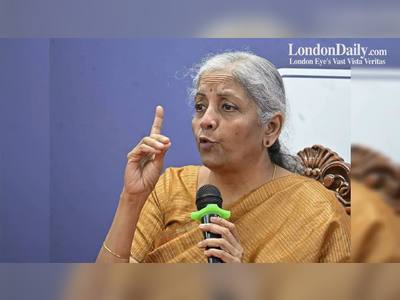Sam Altman Admits OpenAI Was on 'Wrong Side of History,' Considers Open-Sourcing Code
OpenAI evaluates the potential to open-source its older models after Chinese competitor DeepSeek launches a similar generative AI model with open code.
Sam Altman, the founder and CEO of OpenAI, has acknowledged that the company was on the 'wrong side of history' regarding its approach to open-source artificial intelligence (AI).
His comments come after the surprise release of DeepSeek, a Chinese AI company’s generative AI model, which launched with open-source code.
DeepSeek's model, which rivals advanced models from OpenAI, reportedly offers similar capabilities at a fraction of the development cost.
However, skepticism arose around DeepSeek's claims, with reports suggesting that the company may have used ChatGPT for model development and acquired Nvidia chips through the black market, with the actual cost of development exceeding half a billion dollars.
Despite these revelations, Altman acknowledges that DeepSeek’s open-source approach represents a significant shift in the industry, prompting OpenAI to reconsider its strategy.
'We will build better models in the future, but we’ll be at a lesser lead than we had in previous years,' Altman said during a Reddit Q&A.
Altman also commented on DeepSeek’s decision to release its model with open code, a stark contrast to OpenAI's approach, which restricts its models to closed-source code and maintains full control over how they are used.
Altman admitted that OpenAI’s strategy regarding open-source code needs rethinking.
'I think we were on the wrong side of history, and we need to think about a new open-source strategy,' he said.
However, Altman clarified that not everyone at OpenAI shares his view and that it is not the company's top priority.
Kevin Weil, OpenAI’s product lead, added that the company is considering releasing older models as open-source.
'We’ll definitely think more about it,' Weil said.
Altman also highlighted another potential change in OpenAI’s approach: greater transparency regarding its models' thinking processes.
Currently, OpenAI’s models conceal their reasoning and decision-making to prevent competitors from using these insights in their own model development.
This contrasts with DeepSeek’s R1 model, which openly displays its full thought chain.
'We’re working on showing more of the process than we currently do.
Very soon, we’ll show the thinking process of the model.
We haven’t decided how much to show yet—exposing the entire thought chain allows competitors to use it, but we also know people want that.
So we’ll find a balanced way to do it,' Altman said.
His comments come after the surprise release of DeepSeek, a Chinese AI company’s generative AI model, which launched with open-source code.
DeepSeek's model, which rivals advanced models from OpenAI, reportedly offers similar capabilities at a fraction of the development cost.
However, skepticism arose around DeepSeek's claims, with reports suggesting that the company may have used ChatGPT for model development and acquired Nvidia chips through the black market, with the actual cost of development exceeding half a billion dollars.
Despite these revelations, Altman acknowledges that DeepSeek’s open-source approach represents a significant shift in the industry, prompting OpenAI to reconsider its strategy.
'We will build better models in the future, but we’ll be at a lesser lead than we had in previous years,' Altman said during a Reddit Q&A.
Altman also commented on DeepSeek’s decision to release its model with open code, a stark contrast to OpenAI's approach, which restricts its models to closed-source code and maintains full control over how they are used.
Altman admitted that OpenAI’s strategy regarding open-source code needs rethinking.
'I think we were on the wrong side of history, and we need to think about a new open-source strategy,' he said.
However, Altman clarified that not everyone at OpenAI shares his view and that it is not the company's top priority.
Kevin Weil, OpenAI’s product lead, added that the company is considering releasing older models as open-source.
'We’ll definitely think more about it,' Weil said.
Altman also highlighted another potential change in OpenAI’s approach: greater transparency regarding its models' thinking processes.
Currently, OpenAI’s models conceal their reasoning and decision-making to prevent competitors from using these insights in their own model development.
This contrasts with DeepSeek’s R1 model, which openly displays its full thought chain.
'We’re working on showing more of the process than we currently do.
Very soon, we’ll show the thinking process of the model.
We haven’t decided how much to show yet—exposing the entire thought chain allows competitors to use it, but we also know people want that.
So we’ll find a balanced way to do it,' Altman said.









